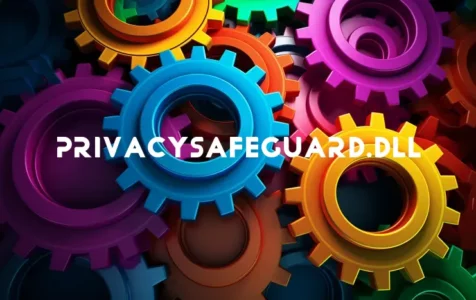Understanding PrivacySafeGuard.dll and Its Role
PrivacySafeGuard.dll is a DLL (Dynamic Link Library) file associated with a browser extension for Internet Explorer, called Privacy SafeGuard. This extension adds various functions to the browser, aiming to enhance user privacy and security as you surf the internet. The DLL is not a fundamental Windows system file and typically resides in a subdirectory within “C:\Program Files”.
The size of the file on Windows 10/7/8/11 systems usually stands at 88,576 bytes. As a Browser Helper Object (BHO), it is automatically loaded each time Internet Explorer starts. BHOs can be a cause for concern, as they have the capability to monitor or alter the behavior of the browser. While BHOs can be legitimate, they are also a common form that adware and spyware can take.
It is paramount to periodically review the DLL processes on your PC to evaluate whether they pose a security threat. Ensuring a clean and well-organized computer is crucial in preventing difficulties with your system. Best practices such as performing backups and setting restore points can safeguard against data loss when issues arise.
Is PrivacySafeGuard.dll Safe?
Not all DLL files are created equal. Some are indispensable to your system’s functioning, while others might be non-essential or even harmful. PrivacySafeGuard.dll does not form part of the Windows operating system and has no visible window, which could raise suspicions about its function and necessity.
Expert Tip: For smoother PC performance, consider using a PC optimization tool. It handles junk files, incorrect settings, and harmful apps. Make sure it's right for your system, and always check the EULA and Privacy Policy.
Special offer. About Outbyte, uninstall instructions, EULA, Privacy Policy.
Adware and spyware are well-known to disguise themselves as DLLs, and if PrivacySafeGuard.dll is behaving unusually (such as changing your Internet Explorer settings without consent), it could potentially be a security risk. Therefore, verifying whether the DLL is legitimate or malware is crucial.
Running a malware scan using reliable security software will help determine if PrivacySafeGuard.dll is malicious. Pay attention to the location of the file; a DLL outside C:\Program Files, especially in C:\Windows or C:\Windows\System32, is more likely to be a threat. Additionally, user comments and reviews can provide insights into the file’s safety and legitimacy.
Common Issues and Solutions
A variety of issues can arise with DLL files, ranging from missing or corrupted files to compatibility problems with certain applications. A common error is the DLL not found or missing, which can cause programs that require the file to malfunction. There are several ways to tackle these problems:
– Run a virus scan with updated antivirus software to eliminate any malware presence.
– Use a system repair tool, such as Fortect, which can automatically correct errors and other common problems with the Windows operating system.
– Restore your computer to a previous state using system restore points if you encounter issues immediately after an installation or change on your computer.
– Uninstalling and then reinstalling the software that relies on PrivacySafeGuard.dll might resolve any error messages related to the file.
Summary of User Experiences and Community Guidance
Various community discussions suggest that PrivacySafeGuard.dll can be problematic, especially if security software flags it as suspicious or if it’s affecting system performance negatively. For instance, it may accidentally be identified as a potential threat by tools like Malwarebytes.
Some users have found that stopping certain services, such as media indexers or automated backup software (e.g., WD Smartware), can resolve related errors they encountered while downloading files. This suggests that these services could be interfering with the operation of programs that use PrivacySafeGuard.dll.
Overall, ensuring that PrivacySafeGuard.dll is not detrimental to your system requires vigilance and a readiness to employ diagnostics and fix actions when necessary. Stay attentive to the behavior of your system and remember: if a file like PrivacySafeGuard.dll raises red flags, it’s better to check it than to regret it later.
